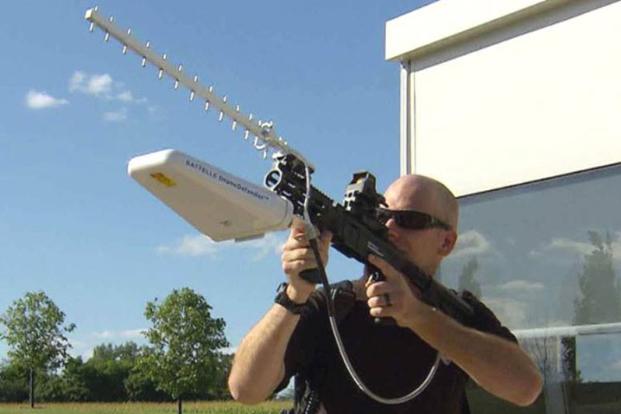The U.S. Air Force recently zapped an Islamic State drone with an electronic weapon, the service's top civilian said.
Air Force Secretary Deborah Lee James on Monday said the service targeted a small, weaponized drone operated by militants "a week or two ago" because it was responsible for killing four non-U.S. citizens in the Middle East.
"The Air Force over there in theater was informed there was one such unmanned aerial system in the vicinity and fairly quickly we were able to bring it down, we brought it down through electronic measures," James said at an event hosted by the Center for a New American Security in Washington, D.C.
"It's an example of something we have to attack quickly," said James, who didn't specify which system was used to immobilize the prop aircraft.
The comments by the secretary, who spoke alongside Army Secretary Eric Fanning and Navy Secretary Ray Mabus, highlight the military's desire to address the growing challenge of targeting small but potentially lethal drones.
"A top priority for me at the moment is this emerging danger that we're seeing in the Middle East in respect to unmanned aerial systems -- these cheap, buy-them-over-the-internet, small drones and if explosives are placed on them, as we've seen a handful of times now in Syria and Iraq, they can do damage," James said.
"So how do we put our heads together on that topic quickly and figure out how to defeat that type of approach and it's not necessarily a development of a new thing to defeat it?" she added.
James said there have been multiple examples of ISIS rigging small, off-the shelf drones and model airplanes as time bombs in both Iraq and Syria. Last week, a U.S. official confirmed another incident, first reported by The New York Times, in which two Kurdish Peshmerga fighters were killed while trying to dismantle a model airplane that was shot down in northern Iraq.
The Air Force secretary suggested the U.S. can easily repurpose electronic weapons systems to address this emerging threat.
Electronic warfare is a popular method being used in Eastern Ukraine. For months, Russian-backed separatists have been jamming signals to misdirect or take out commercial drones Ukrainian soldiers use to conduct aerial surveillance. The move, first observed in 2014, triggered U.S. troops to keep watch as it trained Ukrainian guardsmen on the western side of the country.
"It is good for us to be aware how they fight," Evelyn Farkas, then-deputy assistant secretary of defense for Russia, Ukraine and Eurasia, said in an interview with Military Times last year. "We have not fought wars the way they do in kind of an urban, mixed urban and nonurban setting with UAVs, with electronic jamming."
Earlier this month, the commander of U.S. Army Europe said he wants anti-drone weapons to counter potential threats from Russia, among other equipment. Lt. Gen. Ben Hodges said he would welcome any number of systems to do the job, from newer non-kinetic technologies to older, Cold War-era equipment.
While he didn't specify the name of any new products, Army officials have tested Battelle's DroneDefender, a shoulder-fired weapon that disables drones with radio waves and when paired with an Israeli-made radar can detect unmanned aerial vehicles from several kilometers away.
"I know there's a lot of work being done on non-kinetic means and I am confident that we are going to have some other systems coming down the road … but I need something now," the general told reporters during AUSA. "We didn't worry about [short-range air defense] over the last several years because there was not a threat," he said. "Now you look at the UAVs, I need a counter-UAV capability."
While the Pentagon says it has sped up research and development of newer counter-drone systems to be used against ISIS and in Europe, it is reportedly already using the Battelle technology in Iraq.
-- Brendan McGarry and Matthew Cox contributed to this report.










